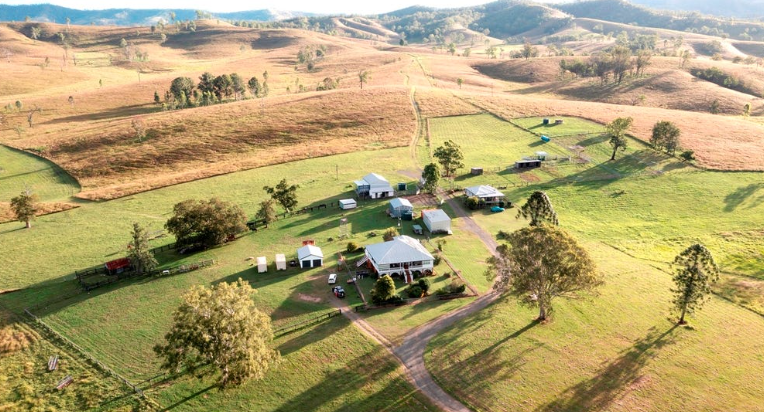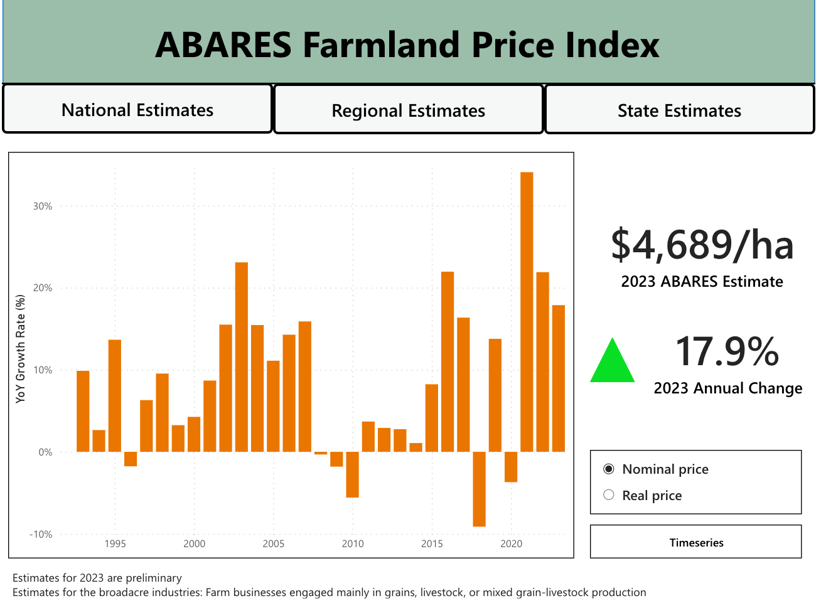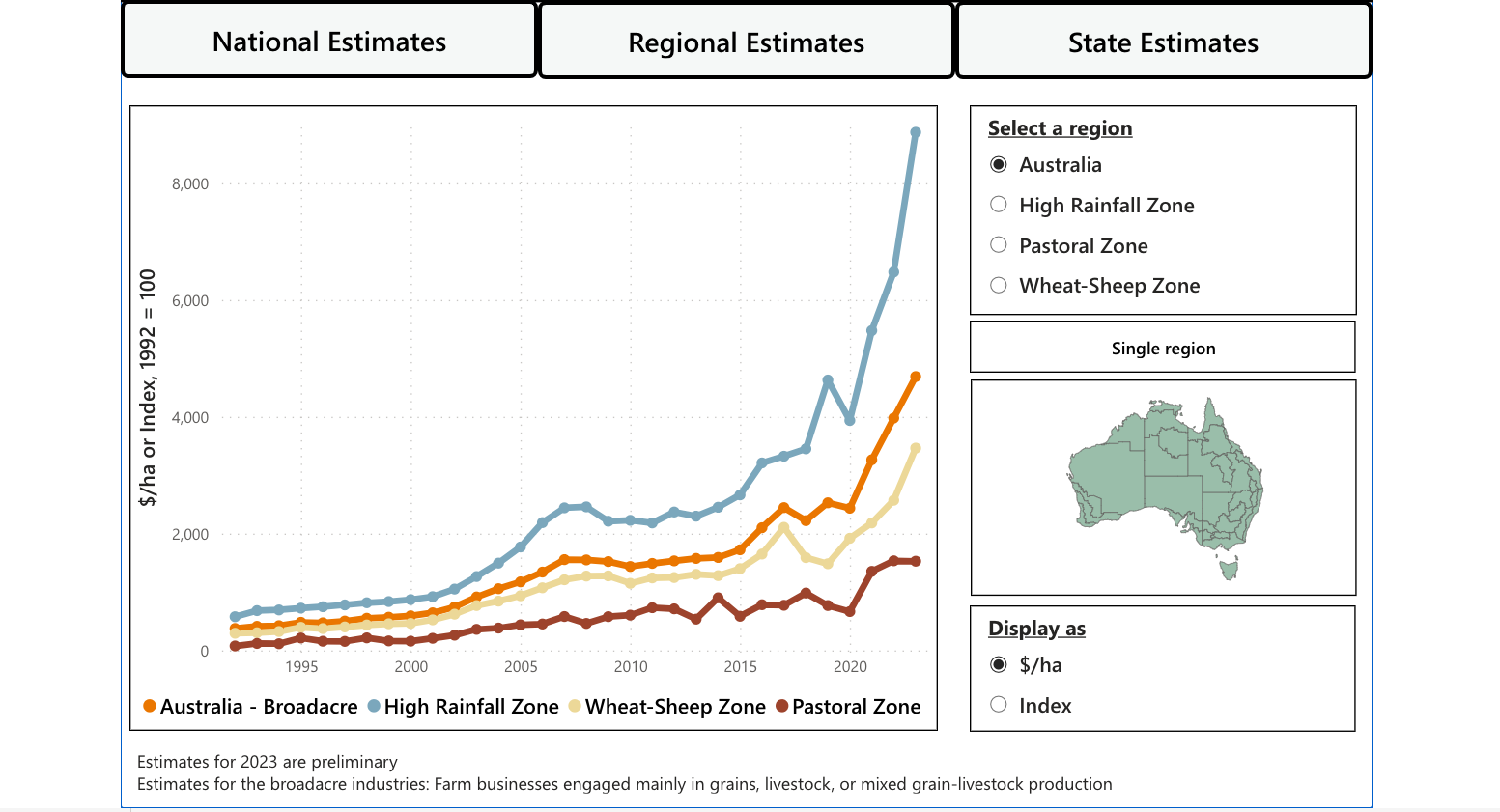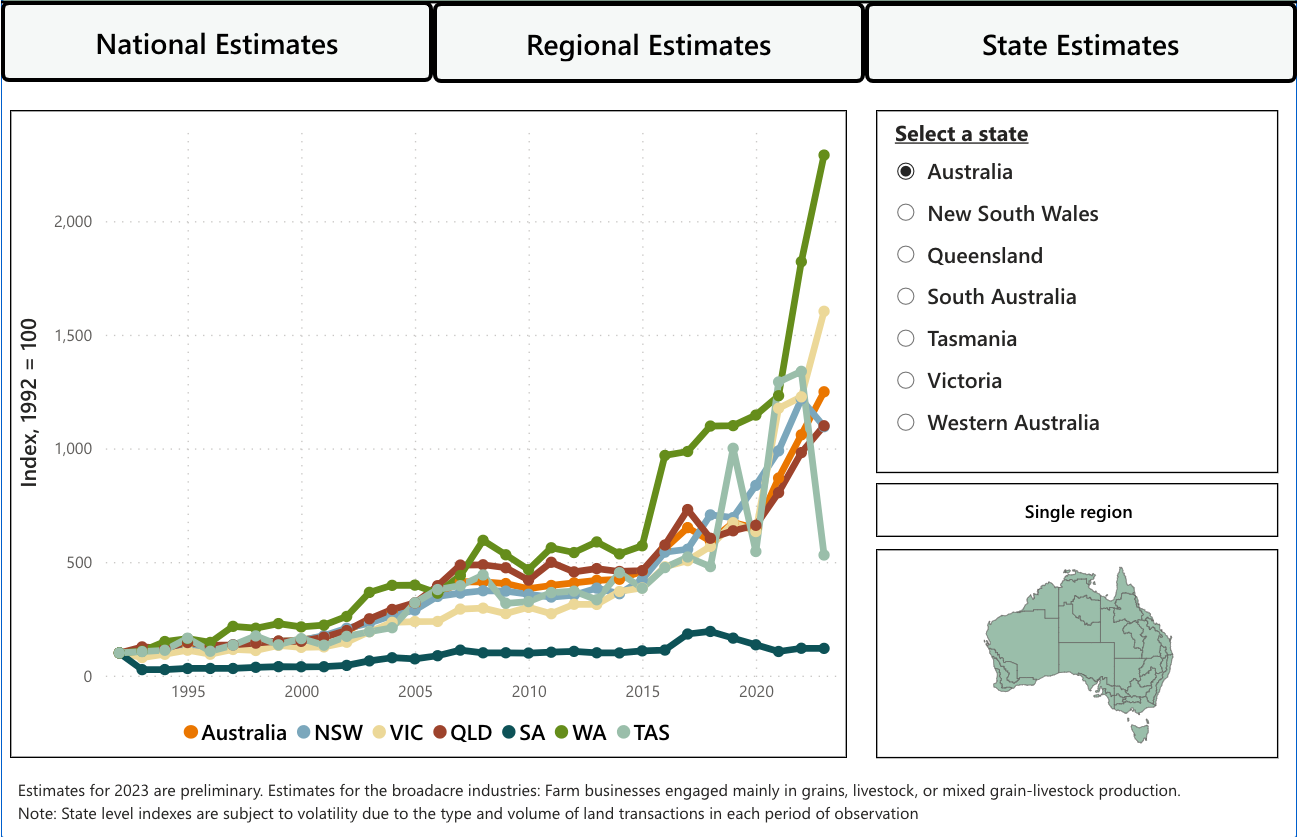
A new farmland price index created by ABARES has revealed the incredible trajectory of Australian broadacre property over the last three years with the national average price per hectare almost doubling from $2435 in 2020 to an estimated $4689.
The index combines CoreLogic land transaction data with ABARES farm survey data to create an estimate of farm values that can be segmented across location, asset type and farming zone.
The data set is designed to account for variability and volatility in farmland transactions and avoid relying solely on individual parcel sales.

While the national data shows three years of double-digit growth in prices per hectare, the more in-demand properties have been those in the high rainfall regions of the country, including the coastal east and South West Australia, and wheat-sheep zones.
Median farmland prices grew by 125% over the last 3 years to almost $9,000 per hectare in high rainfall regions while prices in the wheat-sheep zone grew 80% over the same period to $3,465 per hectare.
Coming off a lower base, the average price of pastoral zone farmland increased by 130% since 2020 to reach $1,528 per hectare in 2023.

O n a state-by-state basis — indexed back to the start of the time series in 1992 — West Australia has been the highest performer, followed by Victoria and with Queensland and NSW in equal third place.
While ABARES cautions that the 2023 estimates are preliminary and that state figures are volatile, the tool shows a decline in farm prices relative to the index in New South Wales and a steep drop in Tasmania.

In releasing the tool, ABARES executive director Dr Jared Greenville said work was already underway to expand the product to include detailed regional estimates and quarterly indexes. He said it would be a valuable tool given the importance of farmland values in securing lending to improve equity and drive investment.
"Users can gain valuable insights into market trends, access reliable information on the value of their farmland assets and track annual changes over time,” Dr Greenville said.
“The Index utilises a robust and effective method developed by ABARES ensuring estimates reflect market conditions.”
The tool can be accessed on ABARES website.
 Results
Results
